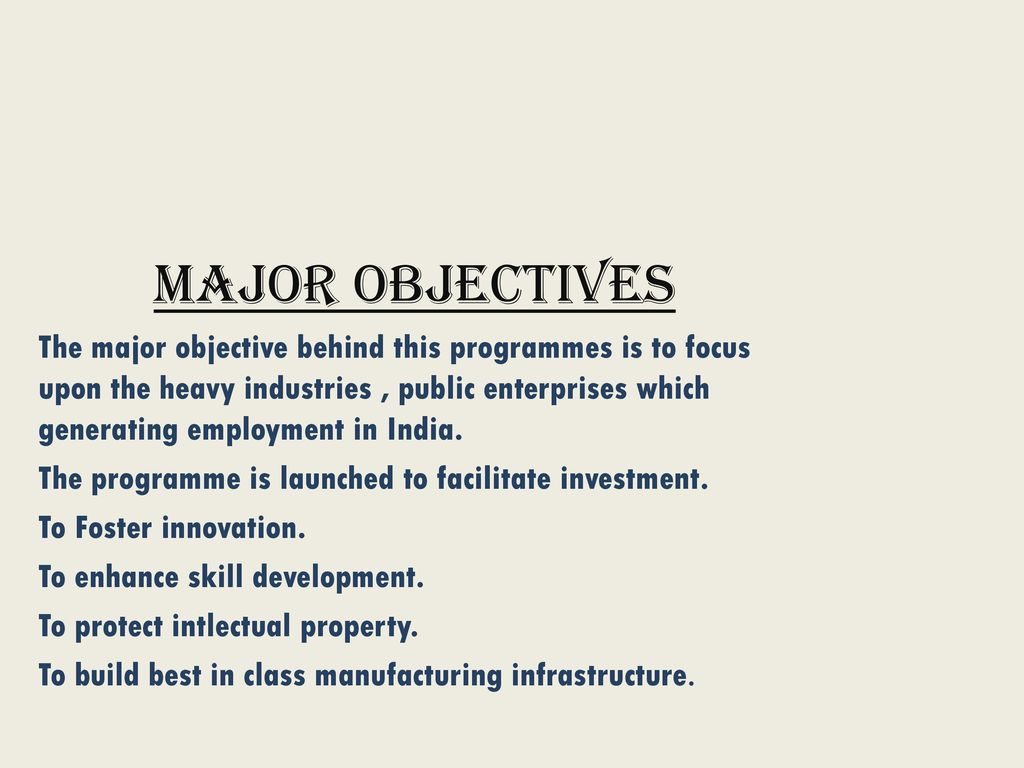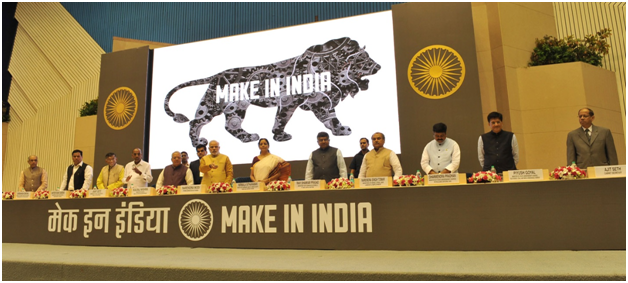Relevance: Mains: G.S paper II: Polity: Schemes and policies
Context:
- On September 25, 2014, the Indian government announced the ‘Make in India’ initiative to encourage manufacturing in India and galvanize the economy with dedicated investments in manufacturing and services.
Background:
- In 2015, India emerged as the top destination for foreign direct investment, surpassing the U.S. and China.
• In line with the national programme, States too launched their own initiatives.
• Five years later, as we brace for another Union Budget, it would be appropriate to take stock of the much-hyped initiative as the economy in general, and the manufacturing sector in particular, is on a slippery slope.
• The ‘Make in India’ idea is not new.
• Factory production has a long history in the country.
• This initiative, however, set an ambitious goal of making India a global manufacturing hub.
• To achieve this goal, targets were identified and policies outlined.
Objectives of the Make in India program:
• The three major objectives were:
• (a) to increase the manufacturing sector’s growth rate to 12-14% per annum in order to increase the sector’s share in the economy;
• (b) to create 100 million additional manufacturing jobs in the economy by 2022; and
• (c) to ensure that the manufacturing sector’s contribution to GDP is increased to 25% by 2022 (revised to 2025) from the current 16%.

Designed to fail?
- Given that big-ticket projects for grand initiatives such as ‘Make in India’ have long gestation periods and lag effects, assessments of such initiatives can be premature.
• Also, governments often use the excuse of inheriting an economy riddled with macroeconomic problems, and demand more time to set things right.
• This is an argument that the current government invokes frequently.
• However, five years is a reasonable time period to assess the direction and magnitude of outcomes.
• As the policy changes were intended to usher growth in three key variables of the manufacturing sector — investments, output, and employment growth — an examination of these will help us gauge the success of the policy.
Economic slowdown:
- The last five years witnessed slow growth of investment in the economy. This is more so when we consider capital investments in the manufacturing sector.
• Gross fixed capital formation of the private sector, a measure of aggregate investment, declined to 28.6% of GDP in 2017-18 from 31.3% in 2013-14 (Economic Survey 2018-19).
• Interestingly, though the public sector’s share remained more or less the same during this period, the private sector’s share declined from 24.2% to 21.5%.
• Part of this problem can be attributed to the decline in the savings rate in the economy.
• Household savings have declined, while the private corporate sector’s savings have increased.
• With regard to output growth, we find that the monthly index of industrial production pertaining to manufacturing has registered double-digit growth rates only on two occasions during the period April 2012 to November 2019.
• Data show that for a majority of the months, it was 3% or below and even negative for some months.
• Regarding employment growth, we have witnessed questions being raised over the government’s delay in releasing data as well as its attempts to revise existing data collection mechanisms.
• The crux of the debate has been that employment, especially industrial employment, has not grown to keep pace with the rate of new entries into the labour market.
Policy casualness:
- ‘Make in India’ is a good example of a continuous stream of ‘scheme’ announcements. The announcements had two major lacunae.
• The bulk of these schemes relied too much on foreign capital for investments and global markets for produce.
• This created an inbuilt uncertainty, as domestic production had to be planned according to the demand and supply conditions elsewhere.
• The policymakers neglected the third deficit in the economy, which is implementation.
• The economists worry mostly about budget and fiscal deficit, policy implementers need to take into account the implications of implementation deficit in their decisions.
• The result of such a policy oversight is evident in the large number of stalled projects in India.
• The spate of policy announcements without having the preparedness to implement them is ‘policy casualness’. ‘
• Make in India’ has been plagued by a large number of under-prepared initiatives.
Why did ‘Make in India’ fail?
- It set out too ambitious growth rates for the manufacturing sector to achieve. An annual growth rate of 12-14% is well beyond the capacity of the industrial sector.
• The initiative brought in too many sectors into its fold. This led to a loss of policy focus.
• Further, it was seen as a policy devoid of any understanding of the comparative advantages of the domestic economy.
• It given the uncertainties of the global economy and ever-rising trade protectionism, the initiative was spectacularly ill-timed.
Way forward:
- ‘Make in India’ is a policy initiative with inbuilt inconsistencies.
• The bundle of contradictions unfold when we examine the incongruity of ‘swadeshi’ products being made with foreign capital.
• This has led to a scenario where there is a quantum jump in the ‘ease of doing business’ ranking, but investments are still to arrive.
• The economy needs much more than policy window dressing for increasing manufacturing activity.
• The government must realise that industrialisation cannot be kick-started by a series of bills in Parliament and hosting investors’ meets.



One comment